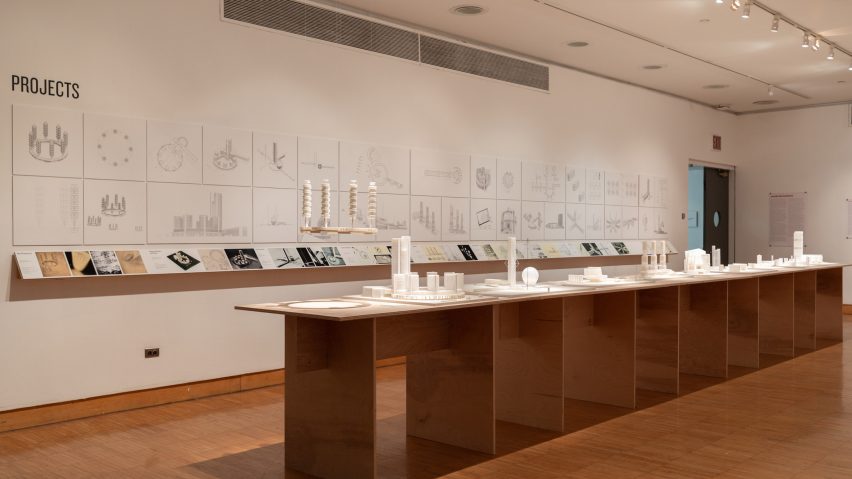An exhibition showcasing the history and work of a Soviet avant-garde school of architecture has opened up at the Cooper Union in New York City after more than a year of delays due to the ongoing Ukraine war.
Vkhutemas: Laboratory of Modernism 1920-1930, which grew out of a 2020 class taught by Cooper Union assistant professor Anna Bokov, highlights the pedagogy and theory of the 1920s Soviet school of architecture.
Curated by Bokov and archives director Steven Hillyer, the exhibition aims to bring to light the work of the Vkhutemas school, which was established soon after the Bolshevik revolution in 1917, to compensate for its silencing "due to ideological repression on both sides of the Iron Curtain".
Showing both student conceptual work in the form of models, historical photographs along with infographics detailing the structure of the school, the exhibition aims to show the relevancy of the school today, which Bokov said was "probably the most democratic educational endeavour".
"The idea was that anyone who wanted to start out from architecture, especially from the social classes that didn't have the opportunity to study art and architecture… in the former pre-revolutionary period, they now had the opportunity to do so," Bokov told Dezeen.
"So here we have, for the first time, equal acceptance criteria."
The exhibition was originally slated to open last year, but was postponed in light of the ongoing Russian invasion of Ukraine.
Earlier this year, the exhibition was postponed again after an opinion piece by New York University historian Peder Anker in Archinect stated it might make Russia "more appealing to the architectural community and New Yorkers".
Cooper Union architecture dean Hayley Eber at the time raised questions about the facts in the piece but still decided to open up a discussion with the students, faculty and with New York City's adjacent Ukranian Village.
"Important historical study"
After deliberation and a letter signed by prominent international architects, the school decided to go ahead with the exhibition.
The exhibition includes a number of statements and letters – in favour of and against – written about the issue.
"These documents are presented with the purpose of urging visitors to reflect on the contemporary social, intellectual, and political background against which this exhibition is situated, and the important historical study of groundbreaking pedagogical practices in and of themselves," said Cooper Union president Laura Sparks.
Bokov and Hillyer agreed that the focus on student work is the most interesting part of the exhibition, with Cooper Union students engaging critically in a "forensic architecture" project that reached back to student work done almost a century prior.
The students created models of projects developed by members of the school, including the outrageous Flying City – a diploma project by Vkhutemas student Georgy Krutikov.
"We were all interested in the line of work within this diverse school that would be most innovative and most relevant for us today," said Bokov.
The reconstructions and models for the exhibition were generated from a limited number of archival works, gleaned from personal archives that Bokov has collected and from Soviet magazines donated to the Beinecke Rare Book and Manuscript Library by architect Peter Eisenman.
Bokov created graphics related to the contemporaneous institution, the Bauhaus, to show the similarities between the two schools and the very different historical receptions.
The lack of information comes from the purge of the school by Joseph Stalin, compounded by the West considering the work too communist, according to Bokov.
"It was a function of the tragic history of that place, which continues to be tragic, unfortunately," said Bokov.
Vkhutemas: Laboratory of Modernism 1920-1930 is open from 25 April to 5 May 2023. For more events, exhibitions and talks in architecture and design visit Dezeen Events Guide.
The photography is by Joāo Enxuto. Courtesy of the Irwin S Chanin School of Architecture Archive, The Cooper Union.

